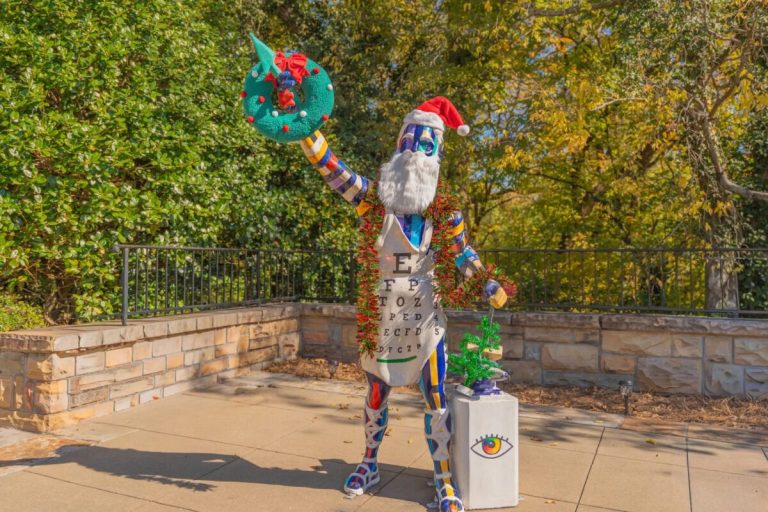Can we prevent this 100% fatal deer disease from invading Alabama? Here’s how you can help.
Reading time: 7 minutes
Sponsored

Ask wildlife professionals, what is the most pressing conservation issue facing the state of Alabama. Most would say CWD, which stands for Chronic Wasting Disease in deer.
Why?
Because CWD is a 100% fatal disease that infects whitetail deer. This slow creeping epidemic has already impacted neighboring states of Tennessee and Mississippi. If it reaches our state, it will dramatically change the way we conserve and enjoy deer and wildlife forever.
What are we up against? Read on, as we examine the dangers and impact of CWD to all Alabamians and how we can prevent it from crossing over our state lines.
What is Chronic Wasting Disease?

According to Tim Gothard, Alabama Wildlife Federation’s longtime Executive Director, wildlife organizations have been fighting CWD since it was first discovered in Colorado 40 to 50 years ago.
What is killing deer across the country? Alabama’s Department of Conservation and Natural Resources tells us:
Chronic Wasting Disease is a fatal disease affecting the central nervous system of deer and elk. This disease belongs to a family of diseases known as transmissible spongiform encephalopathies (TSEs). The disease attacks the brains of infected deer and elk and causes animals to become emaciated (skinny), display abnormal behavior, lose bodily functions, and die. To date, CWD has been diagnosed in free-ranging or captive cervids (deer family) in 25 states and three Canadian provinces.
No cases of CWD have been found in Alabama YET.

Chris Cook, the head of the Alabama Department of Conservation and Natural Resources Deer Program says, “Unlike most wildlife viruses or diseases that typically kill a deer pretty quickly after exposure, a deer that has been infected by CWD can live years with the disease without symptoms.”
“They (deer) do live from anywhere from a year to three to four or five plus years after becoming positive or detectable as having CWD. The bad part is they’re continuing to reproduce and move around – interacting with other deer. They can live for years infecting other deer,” Fortunately for hunters, to date there have been no connections between consuming venison from deer taken from CWD positive areas and human illnesses or diseases,” added Cook.
However, the CDC does recommend testing deer taken from areas known to have CWD prior to consuming venison. If the deer tests positive for CWD, the CDC recommends not eating the venison.
Deadly Disease at Alabama’s Doorstep

After years of seeing CWD migrate east toward Alabama, CWD arrived at our doorstep in 2018. That was when the first infected deer were found in Mississippi. The following year, Tennessee discovered their first deer with CWD.
Recently Tennessee found an infected deer within 23 miles of the northwestern corner of Alabama.
Wake Up Call

Keeping live deer and deer carcasses from entering Alabama is vital in stopping CWD.
“It was a wake up call when CWD was first found in Mississippi and then in Tennessee. I think the most important thing we’ve learned is to not move live deer or dead deer or their parts from an area that has chronic wasting disease to an area that is CWD free. That is the most significant factor in the spread of chronic wasting disease,” described Alabama Wildlife Federation’s Gothard.
In nature, CWD would move very slowly, but the transportation of live deer and deer carcasses in the back of a truck, for example, can make CWD free states like Alabama extremely vulnerable.
It is all about keeping something that is called prions, abnormal folded proteins, which cause CWD from spreading. Prions can be shared amongst live deer through blood, saliva, feces and urine. They also latch onto certain things within a deer carcass like lymph nodes, large bones. skull plates with brain material attached to it, Once these prions have contaminated an area, they will continue to infect deer for years.
Preventing CWD

To prevent CWD from coming into Alabama it is going to take a full court press.
Some good news. Alabama is CWD free because we’ve had strong laws preventing the transportation of live deer and carcasses into the state. For example, before CWD was ever an issue, the importation of live deer was illegal.That has been a law since 1973.
It is also illegal to transport whole deer carcasses across the stateline. In 2002 the Department of Conservation began a CWD monitoring program. For nearly two decades, over 11,000 deer have been tested for CWD with zero positive results.
The general public also plays an important role in keeping Alabama CWD free. Citizens can assist the Department of Conservation by reporting to the Division of Wildlife and Freshwater Fisheries any transport of live deer you might see on Alabama’s roads. If you also see deer behaving abnormally, showing little fear of humans or are skinny and sickly, it might be CWD infected. Help the deer and the Department of Conservation by calling Operation Game Watch at 1-800-272-4263.
Other resources include:
AWF’s Gothard added, “I would encourage everybody in the deer hunting community to become very knowledgeable about what we need to do to help manage chronic wasting disease and make sure that Alabama remains chronic wasting disease free as long as we possibly can. To my fellow Alabamians that don’t hunt. It’s important as well, because the whitetail deer herd in Alabama is a significant part of our outdoor wildlife heritage in this state.”
Without Deer- Conservation Suffers in Alabama

The big picture? Few Alabamians know hunting and fishing licenses pay for conservation in our state. If CWD suppresses deer hunting and subsequently licenses and participation plummets, conservation universally suffers.
“They’re starting to see in places that have had Chronic Wasting Disease for 20 plus years, deer population declines and long term population declines,” stated Chris Cook.

“The revenues generated from license sales and hunting equipment and supplies are a huge part of the overall conservation funding mechanism in our state and in our nation,” said Gothard. “It generates money that not only flows into management of game species that we hunt, but it’s also a significant part of the funding model that contributes to non-game management. Bald Eagle recovery is probably the most prominent example. Anything that causes a reduction in people’s desire to hunt could have impacts across conservation as a whole.”
Good Stewards
Alabama, one of the most biodiverse states in the nation, needs a healthy deer population. If it declines and hunting revenues dramatically decrease, we could lose our ability to be good stewards to the rest of our state’s natural wonders.
Bottomline. Let’s do everything we can to keep CWD out of the state.
Sponsored by:




